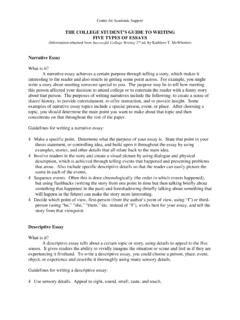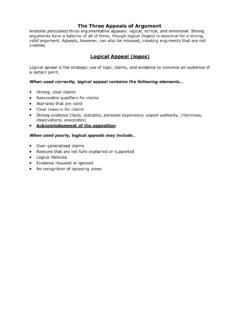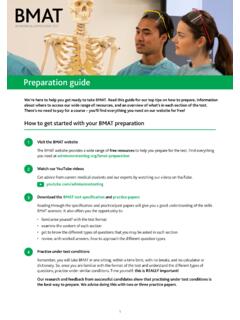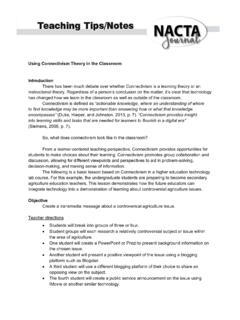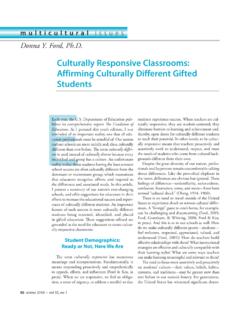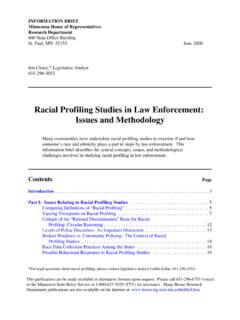Transcription of GLAAD MEDIA REFERENCE GUIDE 10th EDITION
1 1 GLAAD MEDIA REFERENCE GUIDEGLAADMEDIAREFERENCEGUIDE10thEDITION OCTOBER 20162 GLAAD MEDIA REFERENCE GUIDEGLAAD MEDIA CONTACTSL ocal, National, & International News & Faith Spokesperson GLAAD MEDIA REFERENCE GUIDECONTENTSI ntroduction: "Fair, Accurate, & Inclusive" 4 Glossary of TermsLesbian / Gay / Bisexual / Queer 6 Transgender 10AP, Reuters, & New York Times Style 15In FocusCovering the transgender community 18 Covering the bisexual community 20 Nondiscrimination laws & the LGBTQ community 21 Marriage & parenting 23 Religion & faith 25 Hate crimes 27 HIV, AIDS, & the LGBTQ community 28"Conversion therapy" 30 LGBTQ people in sports 31 Directory of Community ResourcesAfrican American communities 33 Anti-violence & hate crimes 33 Asian Pacific Islander (API) communities 33 Bisexuality 33 Community centers 33"Conversion therapy" 33 Family, parenting, & adoption 34 Health 34 HIV & AIDS 34 Immigration 34 International 35 Latinx & Hispanic communities 35 Legal 35 Marriage 36 MEDIA 36 Military 36 Nondiscrimination 36 Political organizations 36 Religion & faith communities 37 Research 37 Seniors & elders 37 Sports 38 Statewide organizations 38 Transgender 38 Youth & education 384 GLAAD MEDIA REFERENCE GUIDEINTRODUCTION"Fair, Accurate & Inclusive" Fair, accurate, and inclusive news MEDIA coverage has played an important role in expanding public awareness and understanding of LGBTQ people.
2 However, many reporters, editors, and producers continue to face challenges covering LGBTQ issues in a complex, sometimes rhetorically charged, coverage of LGBTQ people has become increasingly multi-dimensional, reflecting both the diversity of the community and the growing visibility of LGBTQ people's families and relationships. As a result, reporting that remains mired in simplistic, predictable "pro-gay"/"anti-gay" dualisms does a disservice to readers seeking information on the diversity of opinion and experience within the LGBTQ community. Misinformation and misconceptions about LGBTQ people's lives can be corrected when journalists diligently research the facts and debunk the myths (such as pernicious claims that transgender people pose a danger in public bathrooms) that often are used against LGBTQ continues to be a need for journalists to distinguish between opposing viewpoints on LGBTQ issues and the defamatory rhetoric that fuels prejudice and discrimination.
3 While defamatory comments may be newsworthy, they should not be used simply to provide "balance" in a news , anti-LGBTQ individuals and organizations continue to see their incendiary rhetoric and inaccurate, sensationalistic distortions of LGBTQ people's lives legitimized through news stories, features, and profiles. Such inclusion, despite the best efforts of reporters striving for fair and accurate coverage, devalues the quality of journalism and misinforms an era when LGBTQ people's lives increasingly intersect with mainstream MEDIA coverage of family, faith, the economy, health care, politics, sports, entertainment, and a myriad of other issues, we at GLAAD are committed to providing timely and accurate resources for MEDIA professionals. GLAAD believes the best coverage allows readers, viewers, and listeners to form their own conclusions based on factual information, compelling stories, and appropriate context.
4 We ask that you help give audiences that opportunity in your coverage of LGBTQ people and 's MEDIA REFERENCE GUIDE is intended to be used by journalists reporting for mainstream MEDIA outlets and by creators in entertainment MEDIA who want to tell the stories of LGBTQ people fairly and accurately. It is not intended to be an all-inclusive glossary of language used within the LGBTQ community, nor is it a prescriptive GUIDE for LGBTQ Kate Ellis President & CEO, GLAAD5 GLAAD MEDIA REFERENCE GUIDEGLOSSARYOF TERMSL esbian / Gay / Bisexual / QueerTerminology 6 Terms to avoid 8 Defamatory language 9 TransgenderTerminology 10 Names, pronoun usage, & descriptions 12 Terms to avoid 13 Defamatory language 14AP, Reuters, & New York Times Style 156 GLAAD MEDIA REFERENCE GUIDES exual Orientation The scientifically accurate term for an individual's enduring physical, romantic and/or emotional attraction to members of the same and/or opposite sex, including lesbian, gay, bisexual, and heterosexual (straight) orientations.
5 Avoid the offensive term "sexual preference," which is used to suggest that being gay, lesbian, or bisexual is voluntary and therefore "curable." People need not have had specific sexual experiences to know their own sexual orientation; in fact, they need not have had any sexual experience at The adjective used to describe people whose enduring physical, romantic, and/or emotional attractions are to people of the same sex ( , gay man, gay people). Sometimes lesbian (n. or adj.) is the preferred term for women. Avoid identifying gay people as "homosexuals" an outdated term considered derogatory and offensive to many lesbian and gay A woman whose enduring physical, romantic, and/or emotional attraction is to other women. Some lesbians may prefer to identify as gay (adj.) or as gay women.
6 Avoid identifying lesbians as "homosexuals," a derogatory term (see Offensive Terms to Avoid).Bisexual, Bi A person who has the capacity to form enduring physical, romantic, and/ or emotional attractions to those of the same gender or to those of another gender. People may experience this attraction in differing ways and degrees over their lifetime. Bisexual people need not have had specific sexual experiences to be bisexual; in fact, they need not have had any sexual experience at all to identify as bisexual. Do not use a hyphen in the word "bisexual," and only capitalize bisexual when used at the beginning of a , Transsexual (see page 10) Queer An adjective used by some people, particularly younger people, whose sexual orientation is not exclusively heterosexual ( queer person, queer woman).
7 Typically, for those who identify as queer, the terms lesbian, gay, and bisexual are perceived to be too limiting and/or fraught with cultural connotations they feel don't apply to them. Some people may use queer, or more commonly genderqueer, to describe their gender identity and/or gender expression (see non-binary and/or genderqueer below). Once considered a pejorative term, queer has been reclaimed by some LGBT people to describe themselves; however, it is not a universally accepted term even within the LGBT community. When Q is seen at the end of LGBT, it typically means queer and, less often, Acronym for lesbian, gay, bisexual, transgender, and queer. Sometimes, when the Q is seen at the end of LGBT, it can also mean questioning. LGBT and/or GLBT are also often used. The term "gay community" should be avoided, as it does not accurately reflect the diversity of the community.
8 Rather, LGBTQ community is An umbrella term describing people born with reproductive or sexual anatomy and/or a chromosome pattern that can't be classified as typically male or female. Those variations are also sometimes referred to as Differences of Sex Development (DSD.) Avoid the outdated and derogatory term "hermaphrodite." While some people can have an intersex condition and also identify as transgender, the two are separate and should not be conflated. (For more information, visit )Asexual An adjective used to describe people who do not experience sexual attraction ( , asexual person). A person can also be aromantic, meaning they do not experience romantic attraction. (For more information, visit )Heterosexual An adjective used to describe people whose enduring physical, romantic, and/or emotional attraction is to people of the opposite sex.
9 Also TERMSL esbian / Gay / Bisexual / Queer"Queer" was once considered a pejorative term, but has been reclaimed by some LGBT people to describe themselves. However, it is not a universally accepted term even within the LGBT community. 7 GLAAD MEDIA REFERENCE GUIDEH omosexual (see Offensive Terms to Avoid) Outdated clinical term considered derogatory and offensive. The Associated Press, N e w Yo r k Times and Washington Post restrict usage of the term. Homophobia Fear of people attracted to the same sex. Intolerance, bias, or prejudice is usually a more accurate description of antipathy toward LGBTQ Fear of bisexuals, often based on stereotypes, including inaccurate associations with infidelity, promiscuity, and transmission of sexually transmitted infections. Intolerance, bias, or prejudice is usually a more accurate description of antipathy toward bisexual Out A lifelong process of self-acceptance.
10 People forge a LGBTQ identity first to themselves and then they may reveal it to others. Publicly sharing one's identity may or may not be part of coming A person who self-identifies as LGBTQ in their personal, public, and/or professional lives. For example: Ricky Martin is an out pop star from Puerto Rico. Preferred to openly Gay Describes people who self-identify as gay in their personal, public, and/or professional lives. Also openly lesbian, openly bisexual, openly transgender, openly queer. While accurate and commonly used, the phrase still implies a confessional aspect to publicly acknowledging one's sexual orientation or gender identity. See out above. Closeted Describes a person who is not open about their sexual orientation. Better to simply refer to someone as "not out" about being LGBTQ.

